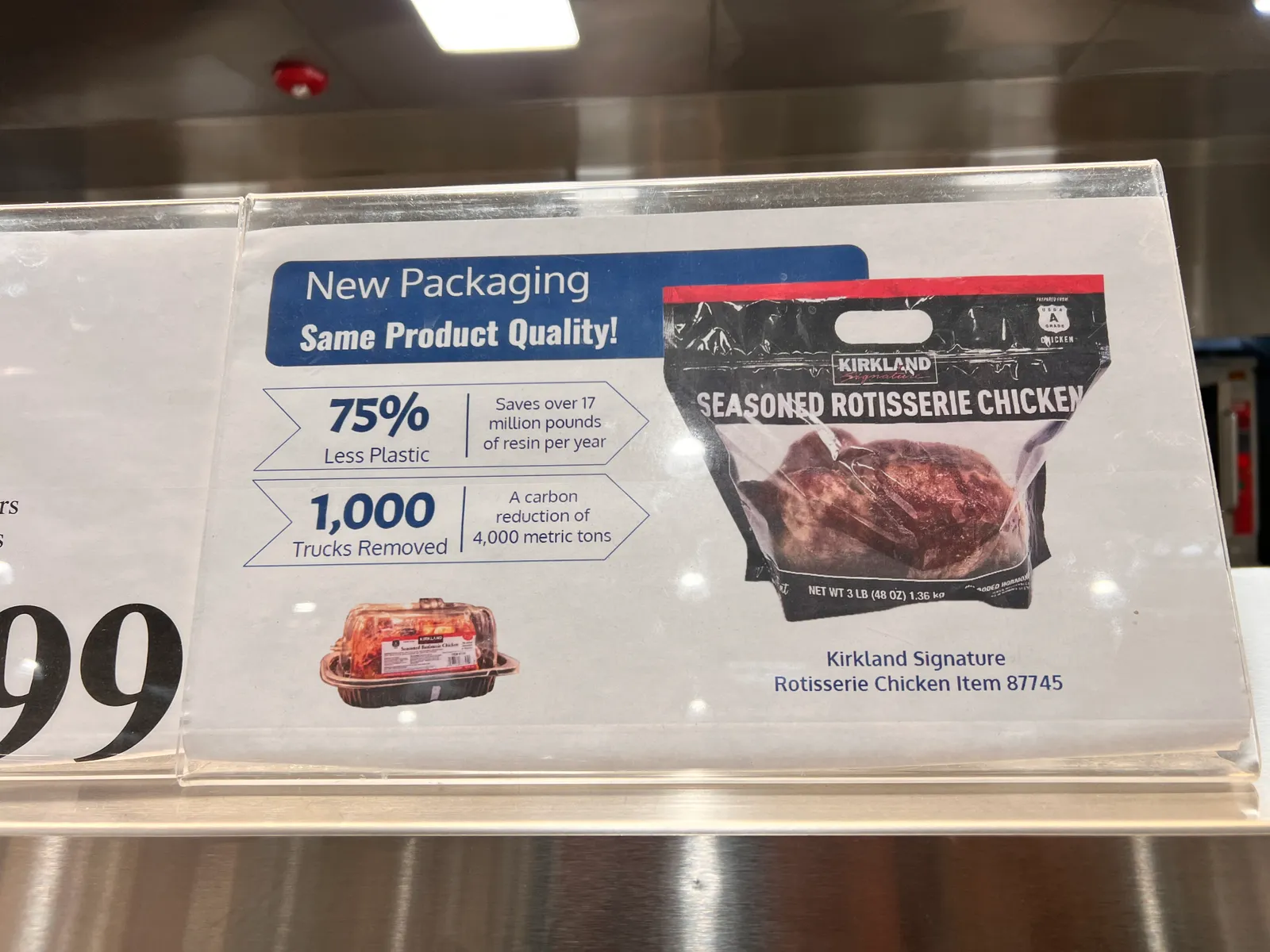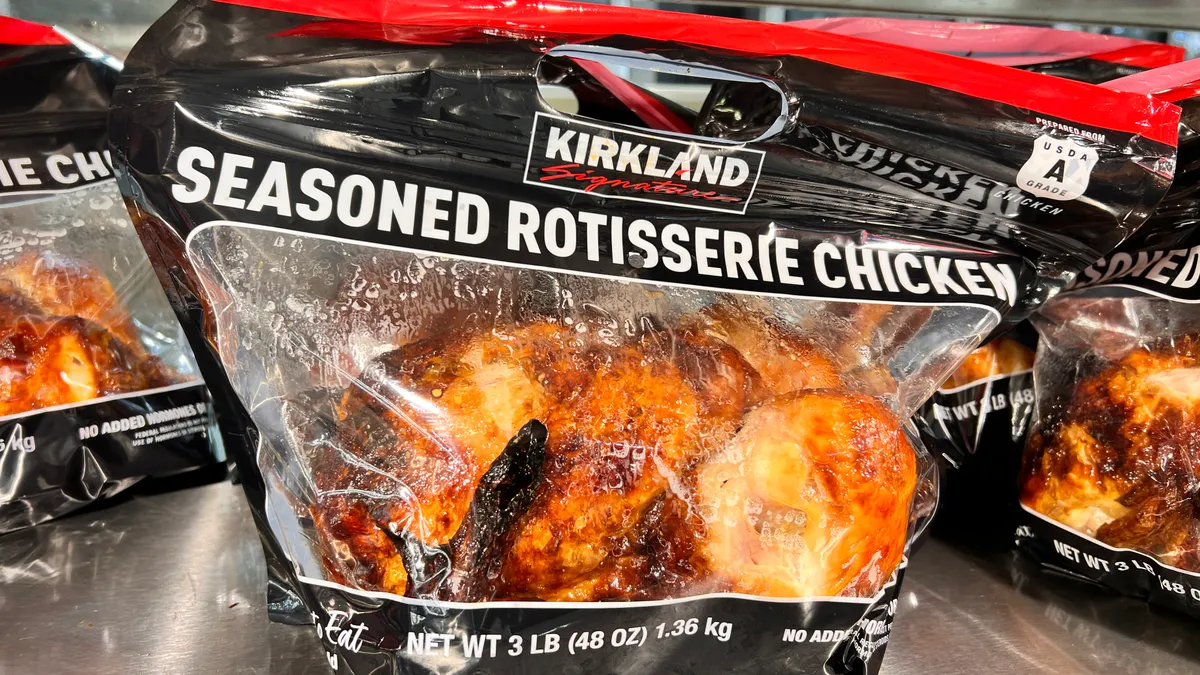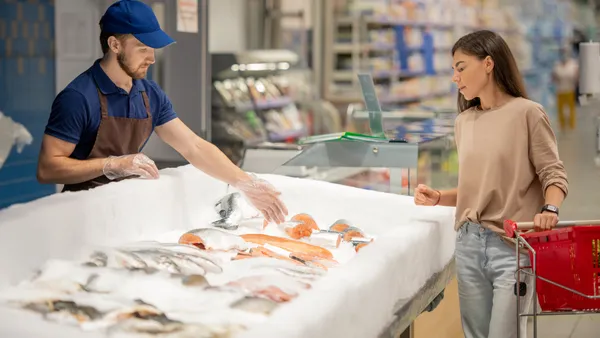Costco’s famous rotisserie chickens are getting a glow up: The widely recognizable domed rigid plastic containers housing the chickens are being replaced with flexible plastic bags — at least in some locations.
A display sign accompanying the chickens at the Issaquah, Washington, store indicates that the packaging switch will result in a 75% reduction in plastic use, saving more than 17 million pounds of resin annually, according to photos taken by sister site Packaging Dive. It also estimates “a carbon reduction of 4,000 metric tons,” equivalent of removing 1,000 trucks from the road.
Costco did not respond to multiple requests for comment from Packaging Dive about the new packaging, including if and when it will be implemented across the country.
The Flexible Packaging Association noted via email that flexible packaging uses the least amount of packaging that is necessary to protect products by optimizing the volume and weight, which results in the smallest package-to-product ratio. In addition, many rigid plastic containers aren’t currently recyclable, which can result in more material going to disposal than by using flexible, stand-up pouches, Alison Keane, FPA president and CEO, wrote via email.
“FPA is not surprised that Costco made the switch from [rigid] plastic packaging to flexible packaging, as in addition to using less plastic overall, switching to flexible packaging also has other environmental benefits,” Keane said. “It reduces water and energy consumption and greenhouse gas emissions during production and storage of the package and reduces the product manufacturers greenhouse gas emissions during transportation.”

Last July, Costco said that it had recently adopted packaging guidelines as part of its sustainability efforts, with the initial focus on its in-house Kirkland brand. “The goal is to reduce packaging waste, while still protecting products, ensuring food safety and complying with laws and regulations,” said Tim Wahlquist, who oversees Costco’s packaging team, in a statement at the time.
The guidelines include examining where less packaging material can be used, whether boxes and plastic containers are made from recycled materials and whether virgin box fiber comes from certified forests. They also look at whether new packaging is recyclable or certified compostable and whether the labeling is clear to help consumers properly dispose of packaging.
While the overall goal is to reduce plastic packaging, such as by lightweighting or switching substrates, Wahlquist noted in his statement that sometimes plastic still makes the most sense for product preservation: “Until feasible alternatives are available, Costco’s goals are to have plastic packaging made from recycled content and be widely recyclable.”
WestRock revealed last summer that Costco asked it to develop fiber-based handles as an alternative to plastic ring carriers for multipack bottles and jars. WestRock then developed the EnduraGrip and Cluster-Clip fiber “dog bone” carriers, which it said are curbside recyclable.
Last October, Costco reached an agreement with ESG investing firm Green Century Funds and pledged to release data regarding Kirkland’s total plastic footprint, broken down by plastic type, and how much recycled content is in its plastic packaging; the data release is expected by July. Costco also committed to developing a five-year action plan detailing steps to reduce Kirkland’s plastic use, which is scheduled for release in December.
“Despite Costco’s recent commitments, more work is needed to address the company’s exposure to single use plastics,” Green Century said in a statement at the time.
Costco operates more than 850 warehouses globally and sold 137 million rotisserie chickens in 2023, an increase of 20 million chickens compared with 2022, according to executives at January’s annual shareholders’ meeting where they discussed full-year financial results.














